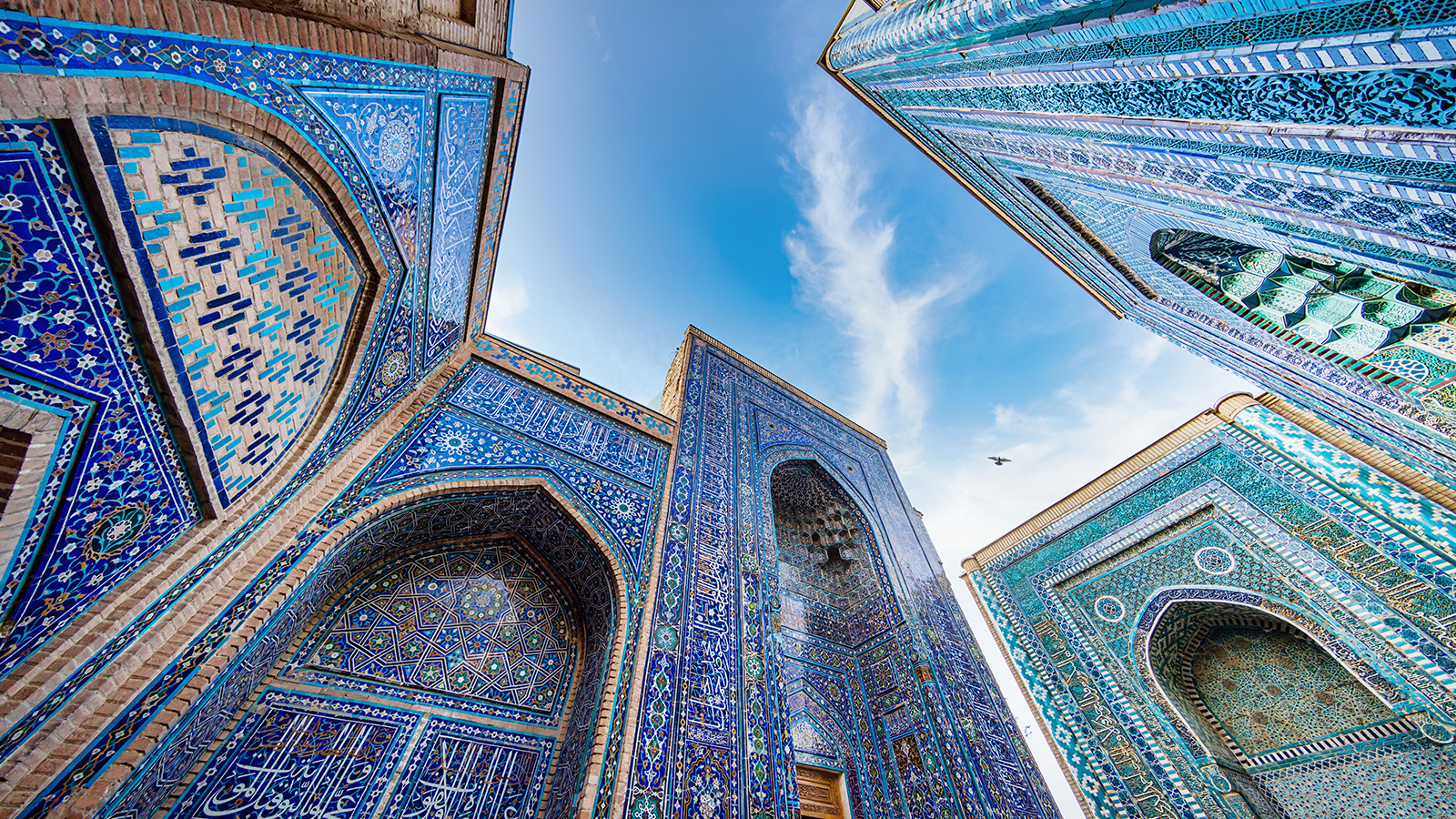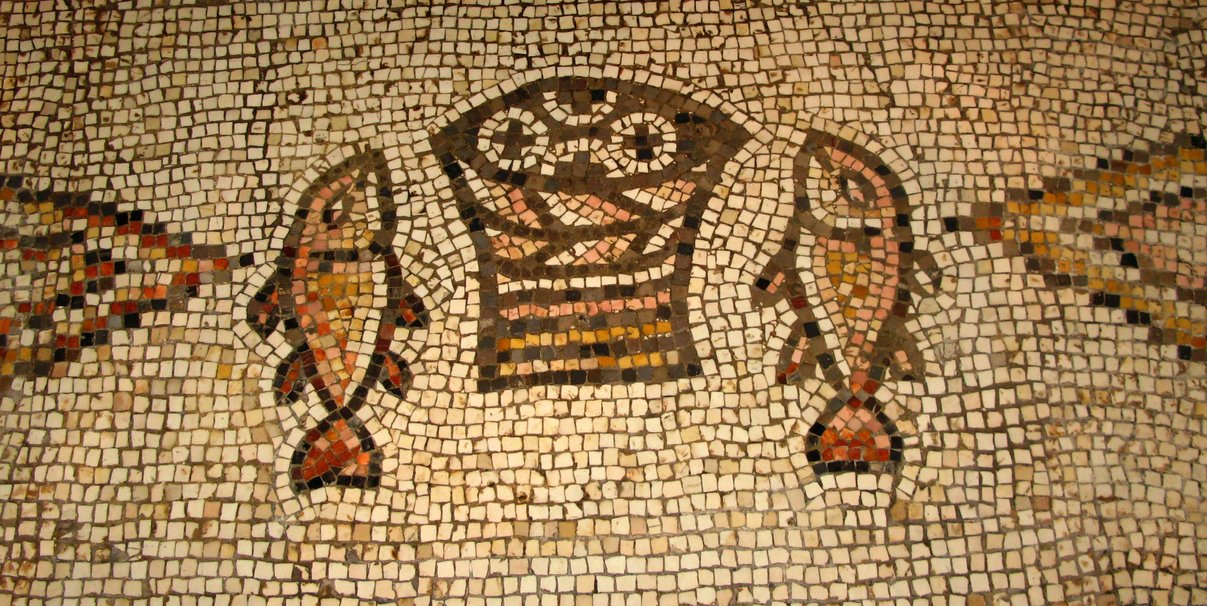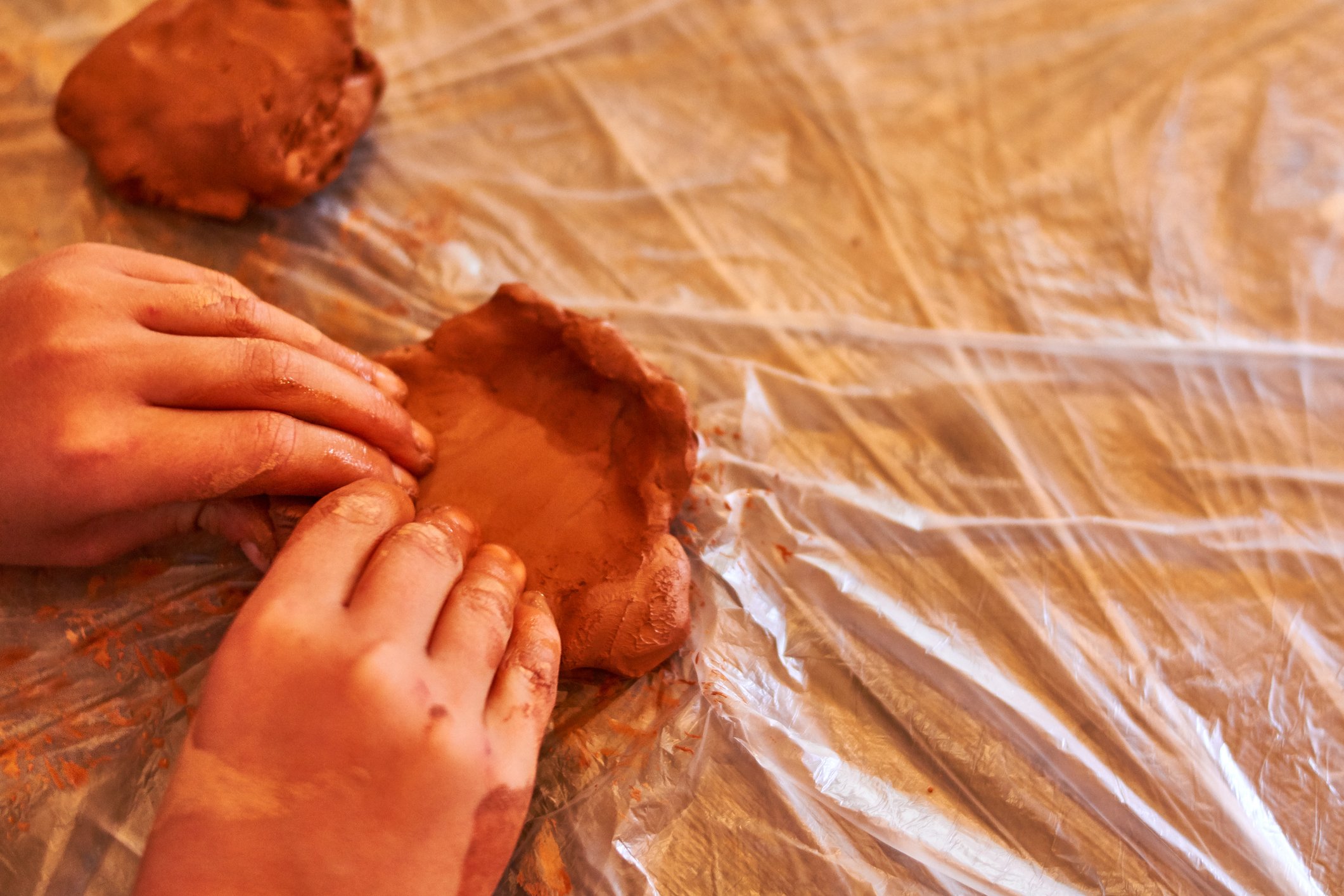
Clay has been used for many things throughout history, including writing surfaces, money, cooking vessels, and building materials. Archaeologists use ceramics as a tool for dating cultures, which can be impactful to note in the social studies classroom. Teaching the evolution of tiles, ceramics, and clay throughout various cultures can inform students about how civilizations utilized these materials and advanced throughout history.
Tiles Throughout History
Tiles have existed for over five thousand years. Egyptians were the first to glaze tile. Muslim Moors of North Africa spread the use of tiles throughout Europe. By the end of the fifteenth century, it was customary to decorate buildings with architectural tiles in ornamental patterns. Tiles lined vaults, domes, stairways, pools, castles, park benches, monasteries, and even street signs.

Photo: iStock by Getty Images / Church of the Multiplication of the Loaves and the Fishes, Tabgha, Israel
Greeks and Romans took over this ancient art and made it their own with mosaics that lined the floors and walls of their bathhouses, luxury villas, and temples. The Chinese contributed their part through porcelain. The Great Gate of Ishtar is perhaps the most famous example of ancient tile art. This entrance gate to Babylon featured lions, bulls, and dragons on a blue background. The first decorative tiles to appear in the thirteen colonies were imported from Europe. Many houses in Jamestown had fireplaces decorated with Dutch tiles that showed scenes of children at play. Due to the expense, tiles were found almost exclusively in the homes of the wealthy.
Colors for tiles come from various metal oxides: cobalt for blue, copper for green, iron for yellow, manganese for red, and combinations of these oxides for various other shades. Early patterns on tiles were mostly geometric, as Islamic beliefs prohibited the drawing of live objects. The predominantly Catholic Portuguese quickly added more exotic themes to tile design.
During the Baroque period, tiles in Portugal were glazed in blue and white (a reflection of the European interest in Chinese Ming-dynasty porcelains) but later were patterned after Moorish rugs. Tiles were patterned in checkerboards or kaleidoscopes, or, in some cases, hundreds of tiles were compiled to create one scene on a building.
Sailors who sailed in Dutch merchant ships and whaling vessels ordered a tiled wall picture depicting one particular ship when they had made a profitable voyage. Sometimes the name of the ship and the name of the captain were mentioned on it. Tiles were not merely aesthetic but also functional. They reflected light and kept houses cool, impeded water and rain, were durable with little deterioration, and required low maintenance. Tiles represented a defense against the climate but often created a clear border between the poor and wealthy.
 Photo: iStock by Getty Images
Photo: iStock by Getty Images
For the Classroom
An easy and fun activity for elementary students is to research a variety of examples of mosaics from cultures around the world for inspiration to create their own creation from scratch using homemade clay.
First, ask students to research various tile structures from the past and present. Students might be inspired by any historical period of their choice or include any of the following examples:
- Mosque of the Dome of the Rock located on the Temple Mount in Jerusalem, the mosaics contain no human figures or animals
- Ishtar Gate of Babylon, decorated with reliefs of 575 dragons and bulls
- Largo Rafael Bordalo Pinheiro, tiled building in Lisbon depicting mythological images that represent Earth, Water, Science, Agriculture, Commerce and Industry
- U.S. Capitol Building, contains over 1000 tile patterns inside
- Sydney Opera House, which has more than one million tiles on the roof
Next, use this recipe to make tiles with students:
1. Mix 1½ cups flour, 1 cup salt, 4 tablespoons vegetable oil, and ½ cup water.
2. Use a rolling pin to flatten the “dough.”
3. Make each tile about 1–1½ inches thick.
4. Have students examine tile patterns and paint their own designs.
Certain shapes of tiles can be replicated to cover a surface with no gaps. These shapes are said to tessellate and such a tiling is called a tessellation. Introduce students to the designs of M.C. Escher. Ask students to research geometric patterns from Islamic and Greco-Roman times as inspiration for their creations.
Finally, ask students to reflect on their learning with an essential question like, “What is a mosaic?” or “What is the historical significance of clay creations?” Show pictures of the Madaba Map, a floor mosaic depicting a map of the Holy Land, and the Hanoi Ceramic Mosaic Mural, a four-mile mosaic that pictures scenes from Vietnamese mythology and Hanoi history. Students can work individually or as a team to create a wall mural with tiles. Often times, a theme, such as a “memory wall,” can give the mural a special meaning or students can recreate an era or specific mural from history.
Tiles abound in home bathrooms, fast-food restaurants, subway stations, and many other places. They resist chemicals and are considered a way to provide a healthy environment. The space shuttle even has a protective jacket of high-tech, heat-resistant tiles. Tiles mostly go unnoticed yet offer an interesting pathway to teach the unique history of how civilization has evolved.
Enhance student inquiry with project-based learning
Try a free 30-day trial of Active Classroom today
Kay Gandy is a retired professor of 17 years and a retired elementary teacher of 27 years. Her goal is to work with teachers in countries around the world and watch movies in foreign theaters. Her books Mapping is Elementary, My Dear and 50 Ways to Teach Social Studies (June 2021) provide practical lesson ideas for elementary teachers.
